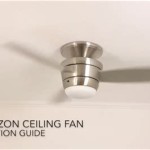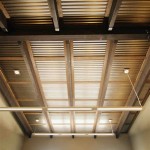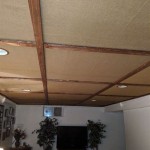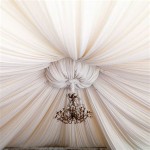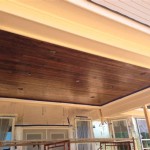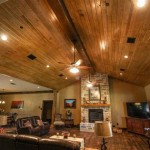How To Hang Sheetrock On Ceiling By Yourself
Installing sheetrock, also known as drywall, on a ceiling is a challenging but achievable task for a skilled DIY enthusiast. Successfully hanging sheetrock overhead requires careful planning, proper tools, and a methodical approach. Due to the weight and awkwardness of the material, many people opt for professional installation. However, with the right preparations and techniques, it is possible to accomplish this task independently.
This article provides a comprehensive guide on how to hang sheetrock on a ceiling by oneself, outlining the necessary steps and highlighting critical considerations for a safe and professional-looking result. It is crucial to remember that safety should always be the top priority; seeking assistance whenever possible is highly recommended, particularly when handling larger or heavier sheets of drywall.
Preparing for the Project: Tools and Materials
Before commencing the installation, gathering the required tools and materials is paramount. Having everything readily available will streamline the process and minimize interruptions. This preparation phase directly affects the efficiency and overall quality of the finished ceiling.
The essential tools include:
Drywall Lift:
This is arguably the most crucial tool for a solo installation. A drywall lift is a mechanical device designed to raise and hold sheetrock in place, freeing your hands to secure the panels. Renting or purchasing a drywall lift is highly recommended to avoid strain and ensure accurate placement.Safety Glasses:
Protecting your eyes from dust and debris is crucial throughout the entire process.Work Gloves:
Gloves provide a better grip and protect your hands from cuts and abrasions.Dust Mask or Respirator:
Drywall dust is a fine particulate that can irritate the respiratory system. A proper mask is essential for lung protection.Measuring Tape:
Accurate measurements are critical for precise cuts and alignment.Utility Knife:
A sharp utility knife is needed for scoring and snapping the drywall to the desired size. Ensure a supply of fresh blades.Drywall Saw:
Used for making irregular cuts around fixtures or obstacles.T-Square or Drywall Square:
These tools ensure accurate right-angle cuts.Stud Finder:
To locate the ceiling joists for secure fastening.Drywall Screw Gun:
This tool is specifically designed to drive drywall screws to the correct depth without tearing the paper facing.Drywall Screws:
Use screws designed for drywall, of the correct length for the thickness of the drywall and the joists.Mud Pan and Taping Knives (Various Sizes):
For applying drywall compound (mud) to seams and screw holes. These will be needed after the hanging process.Joint Tape (Paper or Mesh):
Used to reinforce the seams between drywall sheets. This is also for after the hanging process.Ladder or Scaffolding:
A sturdy ladder or scaffolding is necessary to reach the ceiling safely and comfortably.Pencil:
For marking cut lines and joist locations.
The necessary materials include:
Sheetrock (Drywall):
Determine the appropriate thickness and size of sheetrock based on the ceiling span and building codes. Common thicknesses are 1/2 inch and 5/8 inch.Primer:
To prepare the drywall surface for paint.Paint:
To finish the ceiling after the drywall compound has dried and sanded.
Before you begin, conduct a thorough inspection of the ceiling joists. Ensure they are level and structurally sound. Any repairs or reinforcements should be completed before hanging the drywall. If the existing ceiling has any significant irregularities, shimming the joists may be necessary to create a level surface.
Executing the Installation: Step-by-Step Guide
With the tools and materials prepared, and the ceiling joists inspected, the installation process can commence. This phase demands precision and attention to detail to achieve a smooth and structurally sound ceiling.
The first step involves taking precise measurements of the ceiling area. Create a detailed layout plan, indicating the placement of each sheet of drywall. Plan the layout to minimize seams and optimize material usage. Consider the location of light fixtures, vents, and other obstructions that will require cutouts.
Transfer the measurements to the sheetrock. Use a T-square or drywall square to ensure accurate right angles. Score the drywall with a utility knife along the marked lines. Snap the sheetrock by applying pressure on the opposite side of the score. For smaller cuts or irregular shapes, use a drywall saw.
Position the drywall lift directly beneath the area where the first sheet will be installed. Load the sheetrock onto the lift, ensuring it is securely positioned. Carefully raise the lift until the sheetrock is pressed firmly against the ceiling joists. Make sure the sheetrock is aligned correctly before securing it.
Using the drywall screw gun, drive drywall screws into the joists. Space the screws approximately 12 inches apart along the joists and ensure the screws penetrate the joists adequately for secure fastening. The screw heads should be dimpled slightly into the drywall surface without tearing the paper facing. Avoid over-driving the screws, as this can weaken the connection.
Repeat the process for each sheet of drywall, ensuring that the seams are staggered to prevent cracking. Staggering the seams also adds structural integrity to the ceiling. Leave a small gap (approximately 1/8 inch) between the sheets of drywall to allow for expansion and contraction. This will also facilitate the application of joint tape and compound.
When cutting around light fixtures or other obstructions, use a drywall saw to create precise openings. Accurately measure and mark the location of the obstruction on the sheetrock before cutting. Ensure the cutouts are slightly larger than the fixture to allow for adjustments during installation.
Once all the sheetrock is installed, inspect the surface for any protruding screws or imperfections. Remove any loose screws and replace them with new ones. Ensure that all screw heads are properly dimpled.
Addressing Seams and Finishing: Achieving a Smooth Surface
After the sheetrock is hung, the next phase is to conceal the seams and create a smooth, paintable surface. This involves applying joint tape and drywall compound (mud) to the seams and screw holes. This process requires patience and attention to detail to achieve a professional-looking finish.
Apply joint tape along all the seams between the sheets of drywall. For flat seams, apply a thin layer of drywall compound over the seam. Embed the joint tape into the compound, pressing firmly to remove any air bubbles. For inside corners, fold the joint tape along the crease and apply it to the corner using the same technique. For outside corners, use metal corner bead for added protection and a clean finish. Secure the corner bead with drywall screws or compound.
Apply successive coats of drywall compound over the joint tape and screw holes, allowing each coat to dry completely before applying the next. Use a wider taping knife for each successive coat to feather the edges of the compound and create a smooth transition. Typically, two to three coats of compound are required to completely conceal the seams and screw holes.
After the final coat of compound has dried completely, sand the surface smooth using a drywall sanding sponge or pole sander. Be careful not to sand too aggressively, as this can damage the paper facing of the drywall. Use a fine-grit sandpaper for the final sanding to achieve a smooth, paintable surface. Wear a dust mask or respirator during sanding to protect your lungs from drywall dust.
Once the sanding is complete, remove all dust and debris from the ceiling with a vacuum cleaner or damp cloth. Apply a coat of drywall primer to the entire surface. The primer will help to seal the drywall and provide a uniform surface for painting. Allow the primer to dry completely before applying paint.
Finally, apply two coats of paint to the ceiling, allowing each coat to dry completely before applying the next. Use a high-quality paint designed for ceilings. A matte or flat finish is generally recommended for ceilings, as it helps to minimize imperfections. When the painting is complete, inspect the ceiling for any remaining imperfections and touch them up as needed.
Hanging sheetrock on a ceiling independently demands careful planning, the appropriate tools, and a methodical approach. While challenging, it is a feasible project for experienced DIY enthusiasts. The most critical aspect is ensuring personal safety, particularly when handling heavy materials at heights.

How To Hang Drywall By Yourself

3 Ways To Hang Drywall By Yourself Wikihow

Diy How To Drywall A Ceiling By Yourself No Jack Required

3 Ways To Hang Drywall By Yourself Wikihow

Amazing Trick To Hang Sheetrock Drywall On A Ceiling By Yourself

How To Install Ceiling Drywall 12 Steps With Pictures Wikihow

How I Hung Drywall On A Ceiling Alone

How I Hang Sheetrock Drywall On The Ceiling By Myself Or Yourself Diy

3 Ways To Hang Drywall By Yourself Wikihow

How To Hang Drywall By Yourself Young House Love
Related Posts


